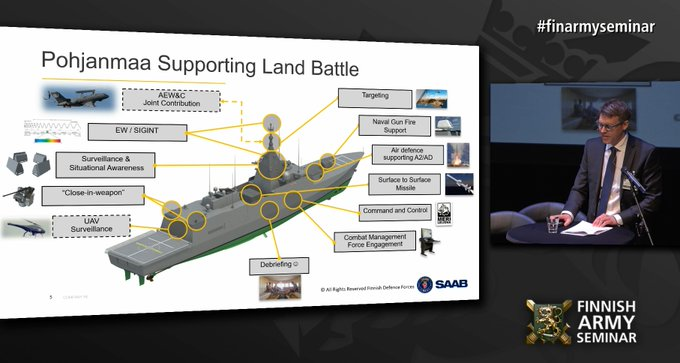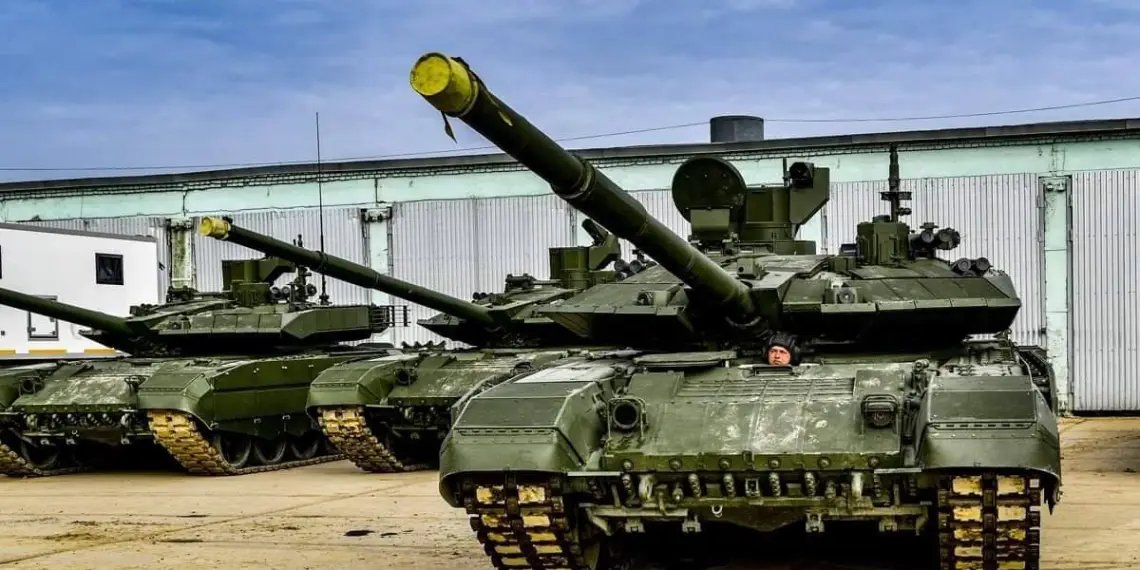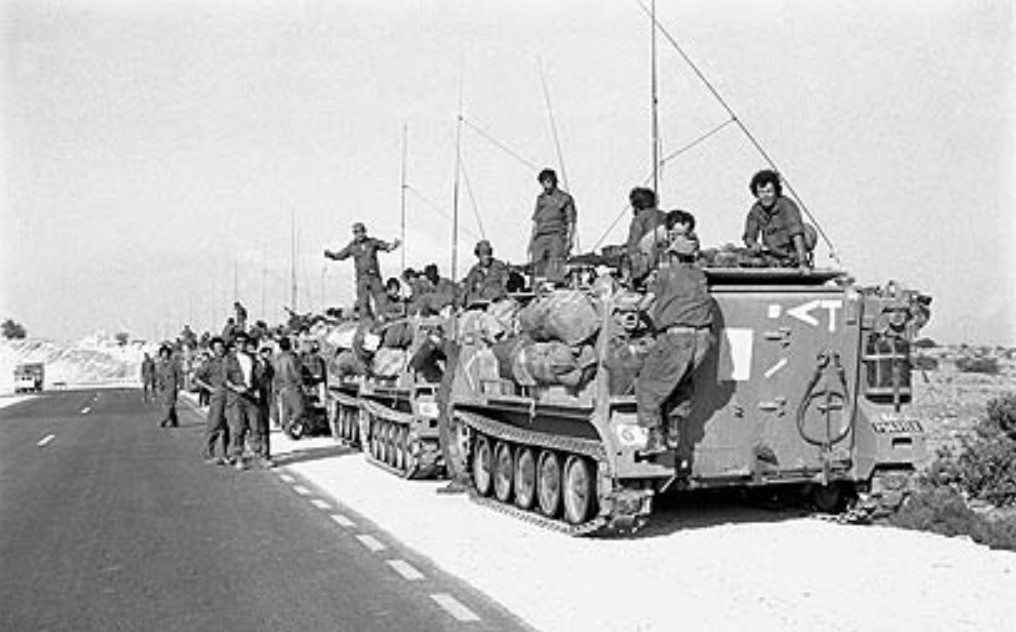#finarmyseminar the Finnish Army is streaming an online seminar on how it sees the future of warfare and its priorities. maavoimat.fi/maavoimasemina… Topics covered so far include the utility of naval assets in land warfare.
It plans to fit future ships with Global Eye UAVs that will provide 20 minute's extra warning of incoming low-flying aircraft over ground based radars. The ships will also include two saunas.
A mesh network is considered essential for future communications; self-organised networks that adapt to the situation and route messages in the best way. The network would consist of hi/lo power nodes, and could reconfigure is any were destroyed.
This would ensure comms if the standard networks were jammed or destroyed as is considered likely in the event of a stat vs state war.
H/T to @securitysplat for the link to this btw.
@securitysplat An interesting graphic showing the intersection of cyber warfare with conventional warfare and government institutions. Finland recognises the fundamental role of cyber warfare as part of an asymmetric or symmetric war. 
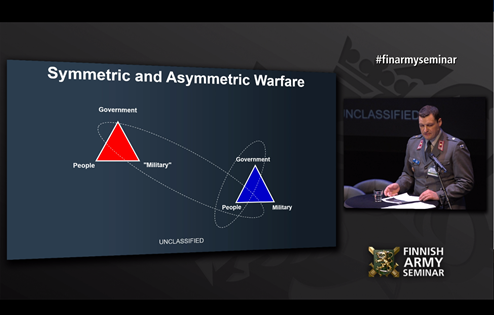
@securitysplat Another slide showing the potential transition of cyber from peace to war. Cyber should be seen as an element of integrated fires, according to the presenter. 
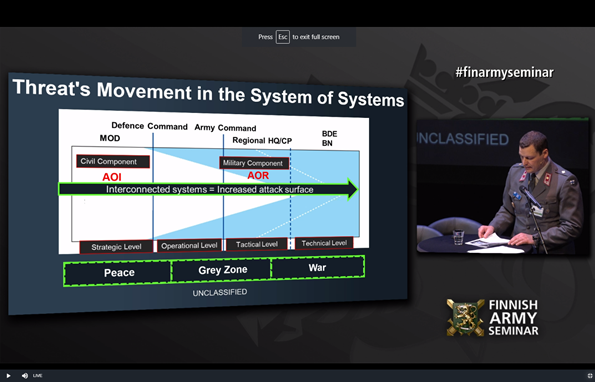
@securitysplat To labour the point - this graphic indicates the extent to which cyber warfare is expected to be involved in conventional warfare. #cyber #Warfare 
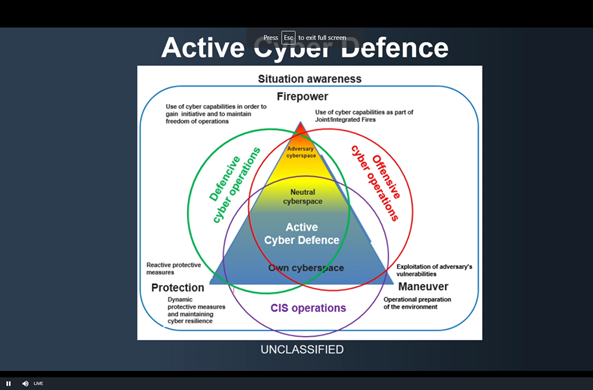
@securitysplat The panel is now discussing whether cyber forces can be certain that they will achieve the desired effect when the "red cyber button" is pressed. Unfortunately not possible the panelist states, but there are other targets that can be engaged and techniques to be used.
@securitysplat He adds that cyber attacks might not be time critical, whereas those supporting air operations are likely to be the reverse. In either case, a different approach is required. The latter might require all eggs in the same basket he explains, downing a single system for instance...
@securitysplat Caveats this by saying that it should be backed by a kinetic option. Supported by next panelist who states that cyber is often a single-use tool.
@securitysplat Conversation has now moved on to who in a land formation should be connected to external assets. Should naval assets be connected to the battalion or brigade commander for instance. Should support be delegated in ways that are not currently exploited?
@securitysplat Concluding point, technology is no longer the challenge. The problem is that we need to imagine how future battles will be fought, and how the army in 15 years time will look.
@securitysplat The seminar has now moved on to the discussion of future warfare. Emphasis is on the need for a robust land response to repel an assault. Interesting theory that the battlefield will not change comprehensively, but include many changes. 
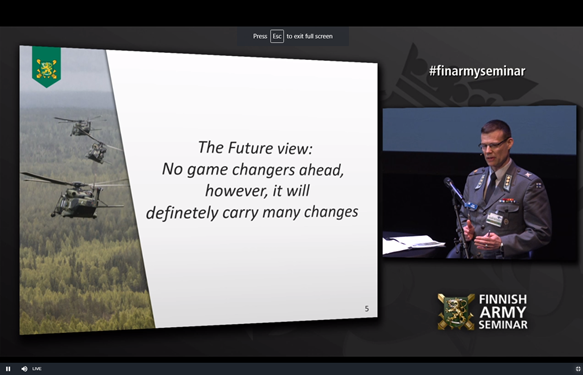
@securitysplat Finland needs a new doctrine, but "the majority of casualties will be caused by indirect fire and artillery." Anti-tank and night vision capabilities remain essential, but the essential need for coordinated sensor-shooter integration with arty is essential. 
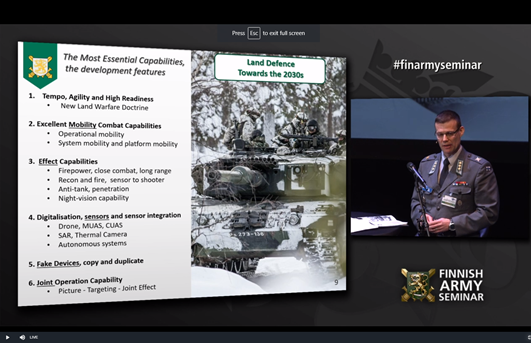
@securitysplat The Colonel's concluding points focus on joint firepower to provide maximal lethality, as well as mobility - from the supporting units to the front-line forces.
• • •
Missing some Tweet in this thread? You can try to
force a refresh

